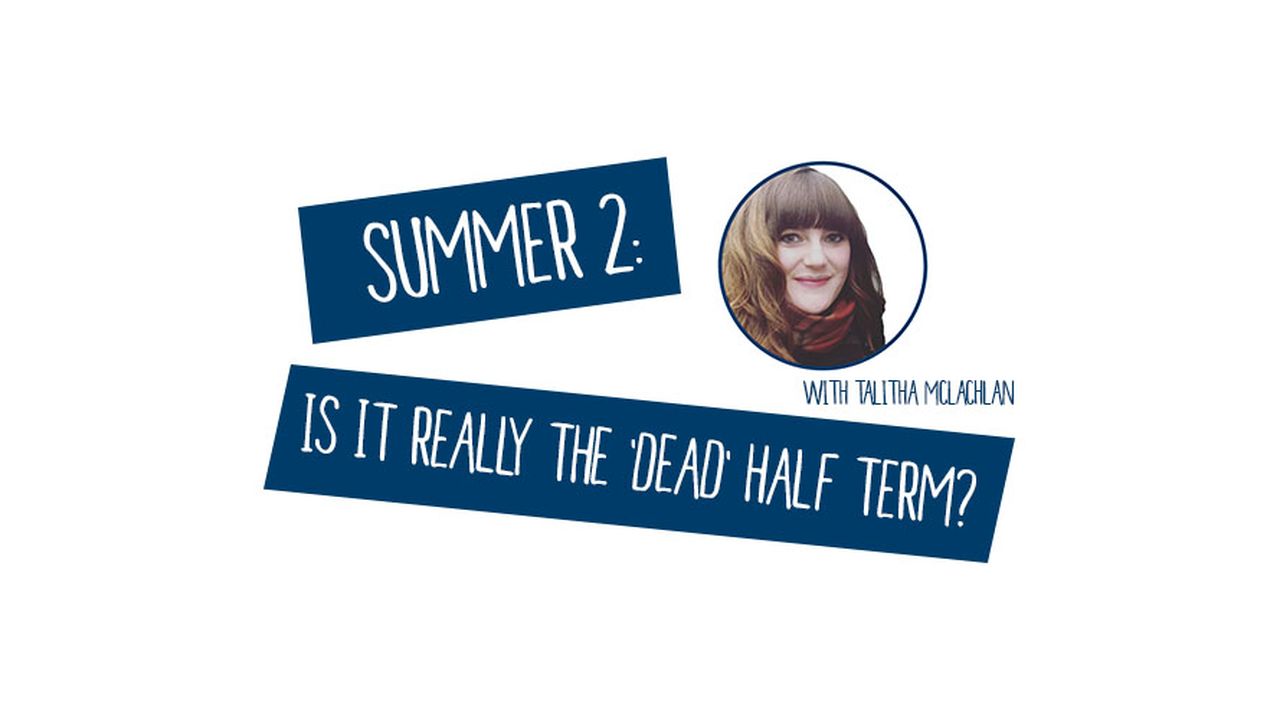Summer 2: is it really the ‘dead’ half term?
With experience in teaching English in primary and secondary, Talitha McLachlan investigates the 'dead' half term.

SATs are over, the weather is getting warmer, (kind of) and the pressure of looming tests and exams has come to a close, at least for primary schools. Some see this as the ‘dead’ half term: time that is absent of strict schedules of maths, English, and the ‘other subjects’ - often used to shoehorn a little bit more maths and English. Summer 2 is often an opportunity to take part in school productions, science experiments, and dare I say it? Art projects. All of these take (at least a little) a backfoot during SATs prep.
Can it be called a ‘dead half term’ if it's just a shift in focus? But, could a gap of three and a half months between regular maths and English be the reason for apathetic and seemingly confused children in the first half term of secondary school?
Testing again in year 7
It’s a common complaint from secondary schools that results from SATs are inflated. There I said it. But what other reason could there be for pupils to spend five years preparing for SATs, only to spend another half term being re-tested for the benefit of their secondary teachers?
Those of us who have spent prolonged periods of time in primary schools can recognise that SATs are definitely not inflated. Many years of blood, sweat and tears from teachers and students have gone into the education of pupils at primary school. The SATs are harder than ever before, (can you explain passive progressive?) and classrooms are on extremely strict time schedules. They must ensure maths, arithmetic, grammar, guided reading, writing and class reading are all catered for in the space of mornings that last approximately two hours and twenty minutes… that’s discounting any behaviour or pastoral issues that will inevitably raise their ugly head before, during and after break-time.
Afternoons are dedicated to ‘everything else’, including the sometimes-neglected science (we won’t get into that right now), PE, PSHE, history, RE, ICT, geography, MFL, art, music and drama (if you’re incredibly lucky). It’s a tight day to say the least, that trapses on from September to May for year 6. The reason for this tight schedule with the sometimes (often) abandonment of the arts and, ‘other subjects’? They aren’t measured. In the same way secondaries have adopted a 5-year curriculum to ensure students are ready for GCSEs, dropping a study of Holes for a classic text in English, for example, primaries are prioritising maths and English. We’re all guilty.
For those primaries that continue to strictly set apart time for art and science investigations, I applaud you. But it is definitely not the case everywhere. Trust me. I’ve lived it. The result of taking your foot off the metaphorical maths and English gas is a huge period of time in which students aren’t utilising the skills they have picked up over the last 5 years. When secondary teachers receive the fresh year 7s, they are presented with students who have forgotten the basics which can lead to much lower expectations from secondary school teachers and of course, re-testing.
What’s the answer?
Stop pointing the finger! Make a change at both ends.
From a primary perspective, ensuring that maths and English are still very much part of the curriculum in the final half term is integral, but mostly emphasising the importance of the other subjects throughout the year is even more important.
From a secondary perspective, get to know the primary curriculum. If they are ‘at expected’ what does that actually mean? What should they know already? A year 7 should, at ‘expected standard,’ be able to explain the progressive use of verbs to you, for instance. Set your expectations at that height. You might be surprised at the pupils’ ability to meet those standards if that’s what you expect.
Finally, communicating and getting to know the schools and teachers of the schools your pupils are going to/have come from will help your understanding of the pupils you work with. It’s always a bonus when you get a chance to share great practice, too!
If some of these points ring true to you, using Learning by Questions at the primary and secondary levels could be the answer. By using LbQ on a daily basis in maths, English, and science, you could help pupils to make further progress and build their confidence in the core subjects. Registering with LbQ gives you access to over 50,000 curriculum-aligned questions and immediate feedback that addresses common misconceptions. Use LbQ throughout the ‘dead’ half term and into year 7 to maintain those high expectations.